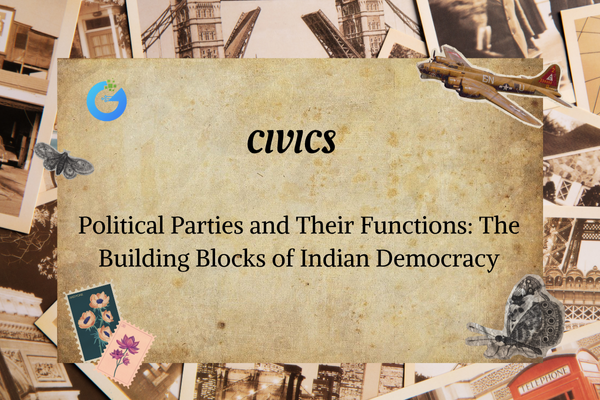Introduction: What’s Really Happening When Things Change?
Have you ever noticed milk turning sour? Or an iron nail getting rusted? Or maybe a candle burning?
All of these are chemical reactions—where one or more substances change into something new. These changes are not just physical (like ice melting)—they are chemical, which means the substances actually turn into something different with new properties.
And to write these changes in Chemistry, we use chemical equations.
expert-led Chemistry classes – visit our website to learn more
What Is a Chemical Reaction?
A chemical reaction is a process where one or more substances (called reactants) are changed into new substances (called products). These changes involve rearrangement of atoms.
Example in real life:
When you burn paper, it turns into ash, smoke, and gases. The paper and oxygen are the reactants, and the ash and gases are the products.
What Is a Chemical Equation?
A chemical equation is a shorthand way to describe a chemical reaction using symbols and formulas.
Word Equation:
Magnesium + Oxygen → Magnesium oxide
Chemical Equation:
Mg + O₂ → MgO
It shows:
- What is reacting (Mg and O₂)
- What is formed (MgO)
- The direction of the reaction (→)
Why Balance a Chemical Equation?
We need to follow the Law of Conservation of Mass, which says:
“Mass can neither be created nor destroyed in a chemical reaction.”
That means:
- The number of atoms of each element on the left side (reactants) must be equal to the right side (products).
Unbalanced:
H₂ + O₂ → H₂O
This is not balanced because:
- 2 hydrogen atoms (H) on both sides ✔️
- But 2 oxygen atoms (left) ≠ 1 oxygen atom (right) ❌
Balanced:
2H₂ + O₂ → 2H₂O
How to Balance a Chemical Equation – Step by Step
- Write the unbalanced equation.
- Count the atoms of each element on both sides.
- Use coefficients (numbers in front) to balance the atoms.
- Never change subscripts (the small numbers in formulas).
- Check again to make sure both sides match.
Example:
Fe + O₂ → Fe₂O₃
Balanced: 4Fe + 3O₂ → 2Fe₂O₃
Types of Chemical Reactions
Let’s break down the 5 main types you need to know in Class 9.
1. Combination Reaction
Two or more substances combine to form one product.
Example:
CaO + H₂O → Ca(OH)₂
(Lime + water = slaked lime)
2. Decomposition Reaction
One substance breaks into two or more simpler substances.
Example:
2H₂O → 2H₂ + O₂
(Electricity breaks water into hydrogen and oxygen)
3. Displacement Reaction
A more reactive element replaces a less reactive element from its compound.
Example:
Zn + CuSO₄ → ZnSO₄ + Cu
(Zinc replaces copper)
4. Double Displacement Reaction
Two compounds exchange ions to form two new compounds.
Example:
Na₂SO₄ + BaCl₂ → BaSO₄ + 2NaCl
5. Oxidation and Reduction (Redox Reactions)
These reactions involve gain or loss of oxygen or electrons.
- Oxidation = gain of oxygen / loss of electrons
- Reduction = loss of oxygen / gain of electrons
Example:
2Mg + O₂ → 2MgO(Magnesium is oxidized, oxygen is reduced)
How to Know If a Chemical Reaction Happened
These are clues that a reaction occurred:
- Color change
- Gas bubbles (effervescence)
- Formation of a solid (precipitate)
- Change in temperature (heat or cold)
- Change in state (solid to liquid, etc.)
Core Concepts Table
| Concept | Meaning |
| Chemical Reaction | Change where new substances are formed |
| Reactants | Substances that react |
| Products | Substances formed after reaction |
| Balanced Equation | Same number of atoms on both sides |
| Combination Reaction | Two → One |
| Decomposition Reaction | One → Two or more |
| Displacement Reaction | One element replaces another |
| Double Displacement | Exchange of ions between two compounds |
| Redox Reaction | Oxidation and reduction together |
Frequently Asked Questions
Q1. What is a balanced equation?
One where the number of atoms is equal on both sides.
Q2. Why do we need to balance chemical equations?
To obey the Law of Conservation of Mass.
Q3. What is a displacement reaction?
When one element takes the place of another in a compound.
Q4. What is a precipitate?
A solid formed during a chemical reaction in a liquid.
Q5. Give one real-life example of chemical reaction.
Baking a cake—the batter turns into something new!
Fun Chemistry Facts
- Fireworks are chemical reactions that release light and sound.
- Rusting of iron is a slow oxidation reaction.
- Acid and base neutralization in your stomach is a chemical reaction.
- Photosynthesis is the most important chemical reaction on Earth!
Conclusion: Why This Topic Is So Important
Understanding chemical reactions and equations helps you see how substances transform all around you—whether it’s in cooking, medicine, digestion, or factories.
When you learn to write and balance equations, you’re learning the language of Chemistry. And trust me, once you understand this topic, everything else in Chemistry gets easier!








